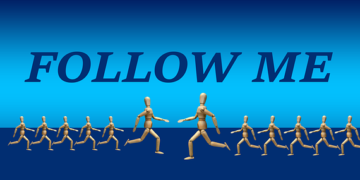More than 140,000 workers in London will be in line to benefit from a 5.3% pay increase because the London Living Wage has moved up to £13.85 an hour. It is part of a continuing effort by the Living Wage Foundation-the charity pushing for fair wages-to ensure workers take home enough to meet rising costs of living in the capital.
What is the London Living Wage?
The Living Wage Foundation set up the London Living Wage: It is not the same as the National Living Wage the Government has set. This wage is calculated also, showing how much people actually have to pay to live in London with its inflation as it is a costly place. The London Living Wage targets employees from 18 years upwards and is a response to the cost of living, being somewhat high in the capital.
Comparison of London Living Wage with National Minimum Wage
The minimum wage set by the government for people above 21 years will be £11.44 per hour. On the other hand, the London Living Wage is increased; it will be £13.85. This means that a worker who will get the London Living Wage throughout the year takes home £4,700 more than an individual receiving the National Living Wage for one whole year.
Why the Pay Rise Matters
A 70p increase from £13.15 to £13.85 for London workers will make a “massive difference,” Katherine Chapman, director of the Living Wage Foundation, said. This is when living costs-including housing, food, and transport-are pushing higher and cash will make a little difference to low-paid people as it delivers a much-needed reprieve from everyday financial pressures they face.
This rise in pay is once again during a time when the inflation rate is still affecting both wages and the family purse up and down the UK. Over the past few months, outside of London, the Real Living Wage is now 5% higher at £12.60 an hour. In other words, it is a national move to drive wages to catch up with living costs.
The Challenge that Remains for London Workers
While this trend suggests an upward trajectory, some 600,000 low-paid workers in London are still struggling to live on their wage. In a new study from the Living Wage Foundation, many workers still struggle with financial insecurity even when working full-time. In one recent survey, over half of those earning below the London Living Wage reported that they had to rely on food banks in the past year.
Which employers are signed up?
It is not a statutory rate, but rather 3,500 businesses in the capital are believed to have voluntarily adopted the London Living Wage with employees being paid accordingly. Some of the most notable companies embracing the London Living Wage include The Oval Cricket Ground, Shakespeare’s Globe, West Ham FC, and Bird & Blend Tea Co.
Business Views of the London Living Wage
For firms like Bird & Blend Tea Co, paying the London Living Wage has brought actual benefits. According to Co-founder Mike Turner, “paying the higher wage hasn’t just reduced staff turnover but helped recruit more. We are a blend of treating people fairly while remaining an ethically sound business, he says, and it has resulted in a happier, more motivated team.
Challenges for Businesses Facing Increased Costs
While most businesses feel the positives of the London Living Wage, some companies are feeling the pinch due to the above-inflation wage increase. According to Muniya Barua of BusinessLDN-a group that advocates for the city’s economic interests-the competitiveness of businesses now takes a hit because of increasing costs. But she says in return, there are long-term benefits, such as retaining staff and attracting talent.
Mayor of London backing
An ardent proponent of the Living Wage is Mayor Sadiq Khan of London. According to him, this would make the city more prosperous and equal, as its wage earners earn higher incomes. The Living Wage Foundation states that, since the institution of the London Living Wage in 2011, around £1.4 billion in extra pay has been delivered to low-paid employees in the city.
Conclusion
This increase in the London Living Wage is an important step toward the fact that workers in one of the world’s most expensive cities can afford a decent level of living. Though this also remains a challenge for both businesses and employees, overall, the effect has been positive where employees have seen real improvements in their finances and businesses have achieved lower turnover with better recruitment.
This will, no doubt, bring much relief to many Londoners in this time of uncertainty. With escalating costs, it is obviously a fantastic and necessary measure to accommodate people with the daily increasing financial demands that keep on arising and lead towards a fairer working environment through initiatives such as the London Living Wage.
FAQs
1. What is the London Living Wage?
The London Living Wage is calculated independently by the Living Wage Foundation as a way to include the real cost of living in London. It is higher than the government’s National Living Wage.
2. The new London Living Wage rises how much?
It has risen from £13.15 to £13.85 per hour, 70p a rise.
3. How is the London Living Wage different from the National Living Wage?
The National Living Wage is a statutory rate, set by government and required to be paid to workers aged 21 and over. It is currently £11.44 an hour. The London Living Wage is higher and voluntary because it embodies a higher cost of living in London.
4. What are the advantages for employers to pay the London Living Wage?
Businesses that pay the London Living Wage frequently claim such gains as fewer staff turnover, easier recruitment, and a better workforce. Commitment to fair wages also gives a firm a good company image.
5. How many employers are registered under the London Living Wage?
Some of them are over 3,500 business undertakings employing workers voluntarily to adopt the Living Wage in London and those employing worth-mentioning companies, such as The Oval Cricket Ground, West Ham FC, and Bird & Blend Tea Co.





























